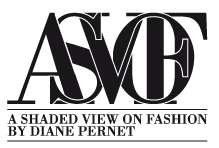
Dear Shaded Viewers,
So what you may be asking yourself is an EP&L? It is an innovative tool imagined by Kering – an environmental profit and loss account facilitating a better way of thinking. It takes you through the whole epic story from the harvesting of raw materials, to the processing of products and shipping them to store. It measures the environmental footprint and calculates its monetary value. The reasoning behind the EP&L is to understand where impacts are, develop a knowledgeable decision-making process, a way to steer the business strategy responsibly. For further details: https://www.kering.com/en/sustainability/environmental-profit-loss/what-is-an-ep-l/.
The first brand in the Group to adopt Kering’s original digital EP&L is Gucci through a customized version on Equilibrium.Gucci.com The open source platform allows you to navigate Gucci’s Environmental Profit & Loss (EP&L) results from 2018.
Gucci now allows its community the opportunity to interact with its own EP&L for the first time.
This new entertaining and interactive way to assess a brand’s footprint visually via an open source platform will create a new generation of sustainability tools that give greater transparency and insight into the link between fashion and the environment.
By detailing its own sustainability progress, all of which is covered in full on its ground-breaking Gucci Equilibrium portal, Gucci is seeking to drive positive social and environmental change.
Gucci’s Culture of Purpose 10-year Sustainability Strategy is driving significant change throughout the business and achieving impressive results – including reducing its environmental footprint by 16% in the last 3 years, without having yet applied any disruptive technology but by simply looking at the sustainable sourcing and use of raw materials, and energy consumption, among others. This means Gucci is fully on target to reduce its footprint by 40% by 2025.
Some of the most significant initiatives in 2018 include:
- GUCCI UP: a circular-economy initiative focused on the up-cycling of scraps of leather and textiles generated during the production process.
In 2018 alone, as a result of partnering and cooperating with many non-profit organizations, Gucci has been able to reuse around 11 tons of leather scraps.
- SCRAPLESS: In 2018, 8 tanneries took part in the project and adopted this optimization process, doubling last year’s savings and achieving a reduction in leather waste by 66 tons
- GREEN ENERGY: we have increased by 146% our use of green energy since 2016 and therefore reduced significantly our CO2 emissions, including steadily reducing the energy consumption across all of our stores.
- METAL: Currently, 66% of palladium coating used for our metal accessories is recycled and traceable.
The tool provides you with all the necessary data to quantify the environmental impact of their activities, filtered by raw material, country and processes. https://gucci-kering-group.opendatasoft.com/pages/home/
About Gucci Equilibrium
A programme and portal designed to connect people, planet and purpose. Designed for a global audience, it is part of a 10-year plan to embed a comprehensive sustainability strategy into and around the brand, governed by a Culture of Purpose. Essentially, Gucci Equilibrium is the House’s mission to bring positive change in order to secure our collective future. For more information visit www.equilibrium.gucci.com
Furthermore, the data sets provide enough details to enable other luxury and fashion players to initiate their own EP&L analysis, which will offer critical new insights into their business and a pathway to mitigate their footprint.
Later,
Diane


